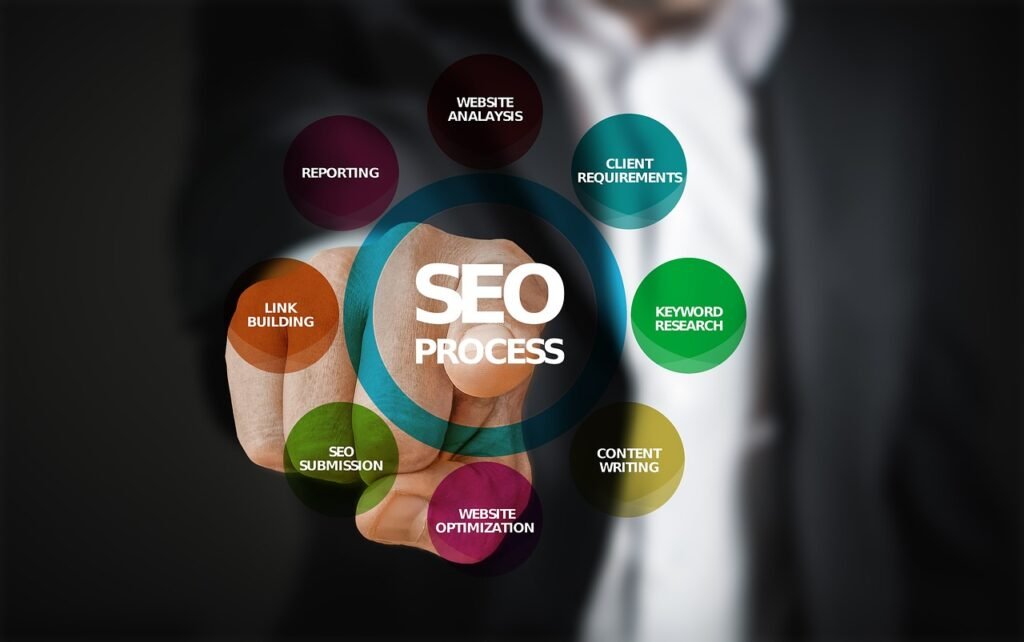Importance of Having a Professional Website
Table of Contents
- Introduction
- Why Having a Professional Website is Crucial for Your Business
- Enhancing Online Visibility
- Building Credibility and Trust
- Generating Leads and Sales
- Providing 24/7 Accessibility
- Key Elements of a Professional Website
- User-Friendly Design
- Mobile Responsiveness
- Fast Loading Speed
- High-Quality Content
- Strong Call-to-Actions
- The Process of Creating a Professional Website
- Planning and Strategy
- Design and Development
- Testing and Launch
- Common Mistakes to Avoid
- Neglecting Mobile Users
- Overloading with Information
- Ignoring SEO Best Practices
- Conclusion
Introduction
In today’s digital age, having a professional website is no longer a luxury; it’s a necessity. For businesses of all sizes, a well-designed website serves as the cornerstone of your online presence. It acts as a digital storefront that operates 24/7, providing valuable information about your products and services, and generating leads and sales even while you sleep. Without a website, your business risks being invisible to potential customers who are increasingly turning to the internet for their needs.
Why Having a Professional Website is Crucial for Your Business
Enhancing Online Visibility
A professional website significantly enhances your online visibility. In a world where over 90% of online experiences begin with a search engine, having a well-optimized website can help you reach a broader audience. By appearing in search results, your business becomes accessible to anyone searching for products or services related to what you offer.
Building Credibility and Trust
First impressions matter, and a professionally designed website helps build credibility and trust with your audience. When visitors land on a polished and easy-to-navigate website, they are more likely to perceive your business as reliable and trustworthy. This perception can be the difference between gaining a new customer and losing them to a competitor.
Generating Leads and Sales
A website is a powerful tool for generating leads and sales. With the right design and content, your website can guide visitors through the buyer’s journey, from awareness to consideration and ultimately to making a purchase. Features like contact forms, live chat, and e-commerce capabilities make it easy for visitors to engage with your business and become customers.
Providing 24/7 Accessibility
Unlike a physical store, a website is accessible 24/7. This means that potential customers can learn about your business, browse your products or services, and make purchases at any time, from anywhere. This round-the-clock accessibility can significantly boost your sales and customer satisfaction.
Key Elements of a Professional Website
User-Friendly Design
A professional website must have a user-friendly design. This means intuitive navigation, a clean layout, and an aesthetically pleasing appearance. Users should be able to find the information they need quickly and easily without feeling overwhelmed.
Mobile Responsiveness
With more than half of all web traffic coming from mobile devices, having a mobile-responsive website is essential. A mobile-responsive design ensures that your website looks and functions well on all devices, providing a seamless experience for users whether they are on a desktop, tablet, or smartphone.
Fast Loading Speed
Website speed is a critical factor in user experience and SEO. A slow-loading website can frustrate visitors and lead to high bounce rates. Ensuring that your website loads quickly can keep visitors engaged and improve your chances of converting them into customers.
High-Quality Content
Content is king. High-quality, relevant content not only helps to inform and engage your audience but also plays a crucial role in SEO. Regularly updated content can help your website rank higher in search engine results, driving more traffic to your site.
Strong Call-to-Actions
Effective call-to-actions (CTAs) guide visitors towards taking specific actions, such as signing up for a newsletter, downloading a resource, or making a purchase. Clear and compelling CTAs are essential for converting visitors into leads and customers.
The Process of Creating a Professional Website
Planning and Strategy
The first step in creating a professional website is planning and strategy. This involves understanding your business goals, identifying your target audience, and determining the key features and functionalities your website will need. A well-thought-out plan lays the foundation for a successful website.
Design and Development
Once you have a plan in place, the next step is design and development. This phase involves creating the visual elements of your website, including the layout, color scheme, typography, and images. It also includes developing the backend functionalities, such as content management systems, e-commerce capabilities, and integration with other tools and services.
Testing and Launch
Before launching your website, it’s crucial to test it thoroughly. This includes checking for any broken links, ensuring all features work correctly, and verifying that the website is optimized for different devices and browsers. Once testing is complete, you can launch your website and start promoting it to your target audience.
Common Mistakes to Avoid
Neglecting Mobile Users
One of the most common mistakes businesses make is neglecting mobile users. With a significant portion of web traffic coming from mobile devices, it’s essential to ensure your website is mobile-friendly. A website that doesn’t perform well on mobile can drive potential customers away.
Overloading with Information
Another common mistake is overloading the website with too much information. While it’s important to provide relevant details about your products and services, overwhelming visitors with excessive content can make it difficult for them to find what they need. Keep your content concise and focused.
Ignoring SEO Best Practices
Ignoring SEO best practices can hinder your website’s ability to rank in search engine results. Ensure that your website is optimized for search engines by using relevant keywords, creating high-quality content, and building backlinks. SEO is a long-term investment that can drive continuous traffic to your site.
Conclusion
A professional website is an essential asset for any business looking to succeed in the digital age. It enhances your online visibility, builds credibility and trust, generates leads and sales, and provides 24/7 accessibility to your customers. By understanding the key elements of a professional website and avoiding common mistakes, you can create a powerful online presence that drives business growth. Investing in a professional website is investing in the future success of your business.

By following this guide, businesses can understand the importance of having a professional website and take the necessary steps to create one that meets their needs and helps them achieve their goals.
